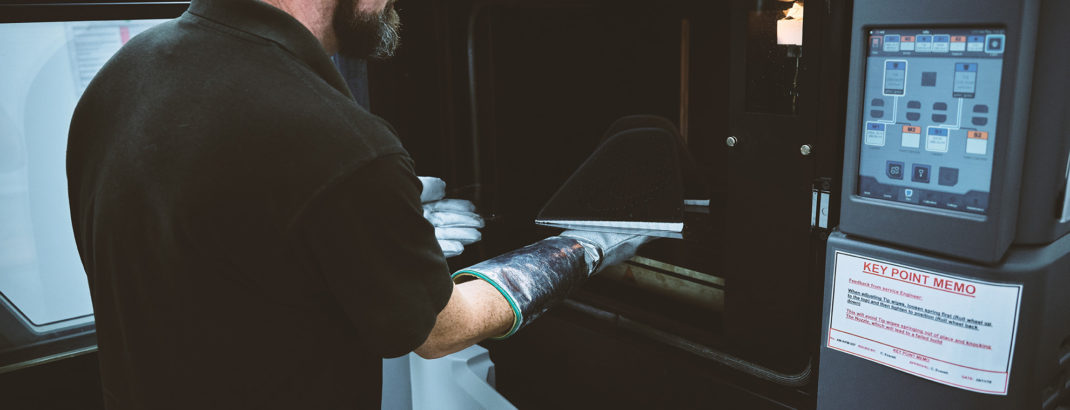Ricoh 3D have pledged to level the playing field to make our Fused Deposition Modelling (FDM) production service competitive with other 3D print technology, writes Richard Minifie, our Senior Additive Manufacturing Engineer.
This move means that, for some projects, more appropriate materials can be used for end-use parts without breaking the bank.
In my experience companies have often shied away from using high-end FDM production systems as they were perceived to be more expensive than other alternatives.
SLS is often preferred for end-use parts, purely from a price perspective rather than suitability for the application, often leading to a compromise in material selection.
Here at Ricoh 3D we have benchmarked against our own SLS prices and created a unique pricing model so can now say that there is very little difference in cost between FDM and SLS when comparing like-for-like. It was important to us that customers were able to pick the best technology and material for their application, rather than making solely price-based decisions.
We’ve also conducted comprehensive research against competitors and believe that our FDM offering is the most comprehensive and cost-effective on the market.
Back to basics, FDM is the most accessible 3D printing process – from home hobbyists through to full production systems – with rapid turnaround times and a wide range of materials and colours aimed at functional applications and design verification.
It constructs parts by extruding polymer through a heated nozzle and depositing the melted material layer by layer.
These layers then cool and solidify, resulting in a printed part that offers high durability and heat resistance.
FDM 3D printing offers a completely different range of materials to SLS or Multi-Jet Fusion. Some of the materials available through FDM are engineering end-use materials such as ABS, which is very common in injection moulding.
Historically, if you wanted an ABS part, you would’ve opted for Nylon 12 because it was cheaper. Today, we can offer the part in ABS at a comparable price.
Not only do we offer what we believe to be the most cost effective FDM on the market, we are also giving our customers access to the wide range of options that a FDM production system has.
For example, we offer four infill and layer thickness options through FDM, something which many other service bureaus cannot match.
The infill simply defines the structure on the inside of the part, in what would otherwise be typically printed solid. Giving the customer four options means the correct infill can be selected based on the part’s application in terms of weight, strength and cost.
We have also made more resources available on our website to increase understanding of FDM and ensure it is accessible to a wider range of businesses.
Our overriding message is simple: use the right 3D material for the job – and FDM can, in some circumstances, allow you greater scope to do that.
As always, our team of 3D printing experts are on hand to talk through projects and advise on the best technologies and materials to use for optimum results.
